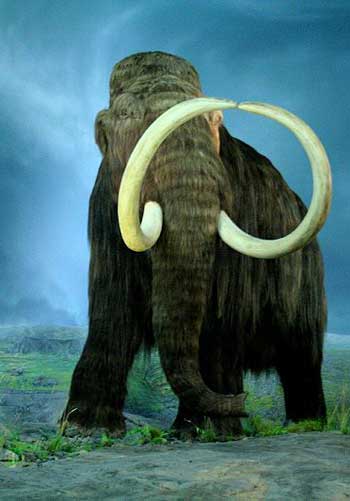Steward Brand: We Need Planetary Restoration
Stewart Brand, who is perhaps best known for his book, Whole Earth Catalog, now runs the Long Now Foundation, which is focused on the next 10,000 years of human civilization. At the American Planning Association (APA) conference in Seattle, he called for a “planet-scale ecological restoration” over the next ten millennia, which can in part be accomplished by bringing back extinct mega-fauna like wooly mammoths. Over the past few thousands of years, the continental grasslands of the global north turned into tundra. To bring back the grasslands systems that co-evolved with wooly mammoths, scientists will need to first revive these ancient creatures using their DNA and the most cutting-edge biotechnology. Reborn grasslands would then be able to store massive amounts of carbon. The other part of this future Brand envisions: people will need to continue to crowd into cities, giving room for natural systems to be revitalized.
Healthy civilizations “balance man-made and natural infrastructures.” To get to a more healthy world, Brand says we must all become “ecological engineers,” like earthworms that aerate the soil, beavers that create dams, or Aldo Leopold, who restored the grasslands of Wisconsin and founded the field of conservation biology.
The problem with our civilization today is “we are not respecting nature’s rate of change.” Brand outlined the trends shaping the world as layers on top of each other forming a sort of onion, but with each layer moving at a different rate. Here are the fastest moving layers and then the slowest: fashion, commerce, infrastructure, governance, culture, and, finally, nature. In this system, everything has its place and its own natural rate of change. If one gets out of synch, the system is violated. “For example, a too-fast rate of governance change can break the system. The U.S.S.R. moved fast with governance, violating commerce, nature, and the system self destructed.”
Brand believes when the fast parts (fashion, commerce, infrastructure) and the slow parts (governance, culture, nature) are in synch, we will have a more resilient system. Fast layers “propose, learn, absorb, discontinue, innovate, and get all the attention,” but slow layers “dispose, remember, integrate, continue, constrain, and have all the power.” In other words, “in cities, the fast layers dominate; but in the world, slow parts dominate.” To achieve a lasting good, “we must take the long view,” nature’s view.
Cities and nature are in flux these days, as the relationship between the two is renegotiated. There are now more than 2,000 coyotes in Chicago alone. And over 10,000 foxes in London. Brand pointed to Emma Marris’s Rambunctious Garden, Jim Sterba’s Nature Wars, and Fred Pierce’s The New Wild, as worthwhile new books that wade into these issues. The New Wild, for example, argues that “invasive species may be the key to nature’s salvation. We need to deal with the weird.”
As for climate change, Brand believes “it will keep things moving around.” He doesn’t see climate change causing more extinctions unless there are abrupt changes. After all, “species are constantly adjusting, eo-evolving with each other and other species. The ecological system is adjusting all the time.” Intervening in nature with biotechnology can help humans bring back useful or even beautiful species, like the passenger pigeon, and destroy dangerous diseases impacting critical species, like white nose syndrome in bats and avian malaria in birds. All of this will be part of our new role as “ecological engineers.”








Follow Us!